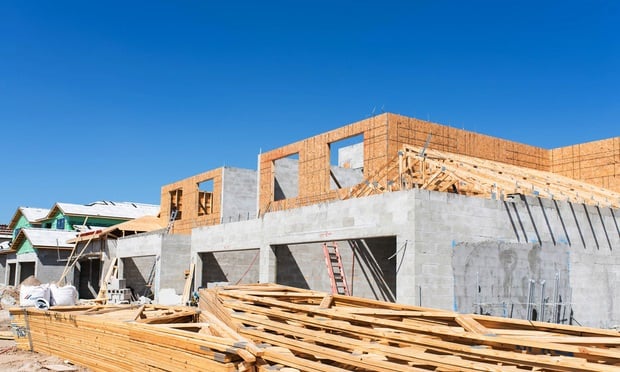The following is an HTML version of the Real Estate Southern California feature that ran in the February/March 2013 issue of Real Estate Forum. RESoCal is part of the magazine's Forum Local series of features. Click here to view this story in its original format.
In early December, Real Estate Forum sister publication GlobeSt.com exclusively reported that Jones Lang LaSalle had upped its hires in the creative office space/entertainment arena with the addition of Nicole Mihalka as the third senior-level broker specializing in the space. The hiring of Mihalka, which followed JLL's earlier additions of industry pros Carl Muhlstein and Hayley Blockley, reflects a growing phenomenon that's significantly altering Southern California's office landscape. In short, plain old office space just won't do these days—not just for tech companies and creative firms in the entertainment and media sectors, but across a widening array of industries.
This burgeoning demand for creative space is the reason JLL chose to boost its expertise in this particular division, according to managing director Alan Aufhammer. He says that demand is especially strong in Southern California. “Entertainment and media are one of the most active sectors in L.A. with more than 3,400 jobs added in the past 12 months,” he tells Forum.
At least in Southern California, according to JLL's Muhlstein, those types of firms are demanding space that isn't limited to the “vanishing 9-to-5 world.”
So-called “creative space” has long been the domain of companies like entertainment and media firms, ad agencies, architects, design shops and others that rely on creative workers as the core of their operations. Demand for this space got a big boost in the dot-com boom of the late 1990s, when scores of new tech companies sought cool spaces for their new enterprises.
“Fortunately their owners did not face the same entitlement rigors, allowing the delivery of over a million square feet to companies like Google, YouTube, Red Bull, VEVO, IMAX, Toms Shoes, TMZ, Sony and 72 & Sunny,” says Muhlstein.
Now, however, the pool of tenants interested in out-of-the-box space has broadened. “Prospects now include more traditional tenants who compete for the best talent and want competitive space, causing vacancy in this class to plummet while traditional office availabilities abound,” he adds.
In the Eye of the Beholder
But just what is creative office space? To some extent, like beauty, it's in the eye of the beholder.
Jim Jacobsen, founder and principal of Industry Partners, explains that, in general, creative space is an adaptive reuse property offering a combination of flexible floor plan with features like exposed ceilings and duct work, large operable windows and skylights, open kitchens, polished concrete floors, etc. “Because creative space is highly functional and adaptive, featuring unique architecture or design characteristics—done right—it can offer tenants a strong design sensibility,” he says. “Most importantly, it has to be true to its bones and remain authentic.”
But be careful not to define any old open warehouse space as creative, Jacobsen warns. “Creative companies reject the cookie-cutter or generic spaces,” he says. “Creative individuals usually have a good eye for spotting whether or not the architecture, floor plan, space design, etc. work together. ”
Creative tenants are especially adept at identifying reasons why a space does or does not work— sometimes just by the way it feels, Jacobsen points out. In other words, that special “feeling” is just as important as the number of offices. “Tenants are simply more apt to 'know it when they see it,' rather than provide a broker with checklist of requirements,” he elaborates.
According to Muhlstein, tenants are targeting space that's conducive to creativity by “creating collisions among smart people who make cool things happen.” This is a recurring theme. Creative office tenants say the right kind of layout and design promotes interaction among workers, which in turn leads to the exchange of ideas, the development of new ideas and collaboration to solve problems.
Living in the Office
The design is also important because people in these fields work in very dense environments with long hours and demand a better quality of office life, explains Jacobsen. “It's not just a place to go to work,” he says.
Although creative space is a subjective term and there is no simple formula for defining or designing it, Heidi Hendy, principal and founder of interior architecture firm H. Hendy Associates, points out that some characteristics of creative space can be measured. For example, offices once consisted of 30% community space and 70% private space, Hendy says, but in the world of creative space, “That equation has been flipped, and landlords and tenants are maximizing the use of interactive spaces that encourage transparency and collaboration.”
Hendy's firm has been a proponent of the move away from “functional-based” office space to more engaging, “activity-based” environments. The firm recently designed collaboration areas for the company Telogis, which relocated its headquarters in order to “increase employee satisfaction” and “host clients in its own space.”
Telogis' goal was to “retain and attract the best talent in the industry,” so the company listened to employee feedback: Sales personnel preferred offices, while non-sales staff favored an open environment to increase cross-connections. All employees were looking for an upbeat space with an entrepreneurial vibe, explains Hendy.
“To appeal to both client and employees, the indoor/outdoor experience was key, prominently featuring California's year-round 70-degree weather. The open feeling and color palette both suggest the Golden State, effectively promoting the new company brand,” says Hendy. The spaces feature touches like outdoor seating, electrical outlets and WiFi access, inviting visitors to “enjoy the sunshine while working or relaxing.”
Landlord Adaptation Is Key
But while tenants might be able to quickly adapt to an environment like that, some landlords are having a tough time. “Too many landlords try to remerchandise existing, dated improvements, which while originally very expensive to build, are becoming obsolete,” explains Muhlstein.
Some landlords have been quicker to adapt to the next generation of office space users than others, notes Steven Card, EVP and managing director at Travers Realty. But the issue, he says, “is that creative space can be more expensive to construct and requires a building with a good infrastructure to build upon.”
Card explains that “tenants are not fooled by buildings with a cool entrance but boring improvements thereafter. Tenants are demanding space that reflects the image and culture of their brands.” His team has also found amenities to be more important than ever as a way to enhance employee productivity. “At several of our properties, we have undertaken significant reinvestment to provide no-fee fitness facilities, state-of-the-art conference centers, cafes, onsite dry cleaning service and other services,” Card says. “We have found that customers in a multi-tenant setting are looking for the same kind of amenities you would find at a dedicated corporate campus.”
The Irvine Co. is one of the many firms that have responded to these new demands. The company has created progressive, open floor plans, collaboration spots to promote interaction, and courtyards and other outdoor spaces that allow companies and their employees to take advantage of mobile technology, according to Steve Case, EVP of leasing for Irvine Co. Office Properties.
In Northern California, for example, Orange County, CA-based Bixby Land Co. redeveloped Bixby@Coronado in Santa Clara, CA—a 1980s-vintage 127,000-square-foot office campus that it transformed into a modern corporate headquarters. The redesign adjoined the existing buildings with a two-story glass pavilion, entirely new drought-tolerant landscaping and new hardscape. The highlight of the redesign is the Bixby Retreat, an exterior courtyard lounge area for tenants. Santa Clara's Infoblox signed a $25-million, eight-year lease for the entire building.
Still, there will always be landlords who do not want to invest in upgrading a space or property to meet any particular tenant's need, explains Industry Partners' Jacobsen. He notes that some landlords say they want to do creative space, but for the wrong reasons. “Maybe it's because they see a nearby property getting higher rents and they decide to convert an existing space to creative or develop a new property—thinking they can save money on finishing costs,” he says. “So, the driving force is how much more money they can get by making a few changes here and there.”
But money can't be the only motivating factor in creative development, Jacobsen adds. “It leads to cheap execution and spaces that look unfinished because there is a tendency to progressively cut corners—believing that tenants won't notice—and before you know it, the project is completely off track.” That, he says, costs more in the long run because the property either sits vacant, has to be fixed, or rates are dropped.
“You have to put your money where your mouth is,” Jacobson says. “The common traits that you see in successful landlords are that they embrace the tenant's unique perspective and are committed to the process from start, but more importantly, to finish.”
Location, Location, Location
The specific submarkets where a recent creative office report from Industry Partners found the highest activity include Santa Monica, Playa Vista, Culver City, Downtown L.A. and North Hollywood. But this list can vary depending on the kind of creative company, says Jacobsen.
“We see certain areas trending due to a number of variables, including value, proximity to where tenants live, transit options or drive times, quality of place, happening amenities, nearby complementary companies or partners, etc.,” Jacobsen says. “Each of these areas also has its own personality, so it's also about fit and why you may see more tech companies in one particular area and entertainment in another.”
According to Muhlstein, the creative office market is really an “S” curve, winding its way from Burbank Media District through Hollywood, spreading a wide swath westward spanning from Santa Monica to the Lower Westside/Playa Vista. “Major entertainment conglomerates have decentralized and dot the area with leased and owned facilities,” he says. “Downtown Los Angeles is rehearsing for the role—greatly improved transportation infrastructure, varied housing choices and improved community-serving retail but has yet to attract significant attention and peer-to-peer networking.”
Ultimately, it's difficult to know where the creative office market will grow and what the spaces will look like because, as Jacobsen says, “It's a moving target, and there's no one magic formula or list to go by.” Unlike some of the bottom-line aspects of the office market, like construction costs or lease rates or an investor's target cap rate, he points out, defining and designing creative space “is as much art and science as spreadsheet.”
Continue Reading for Free
Register and gain access to:
- Breaking commercial real estate news and analysis, on-site and via our newsletters and custom alerts
- Educational webcasts, white papers, and ebooks from industry thought leaders
- Critical coverage of the property casualty insurance and financial advisory markets on our other ALM sites, PropertyCasualty360 and ThinkAdvisor
Already have an account? Sign In Now
© 2024 ALM Global, LLC, All Rights Reserved. Request academic re-use from www.copyright.com. All other uses, submit a request to [email protected]. For more information visit Asset & Logo Licensing.








